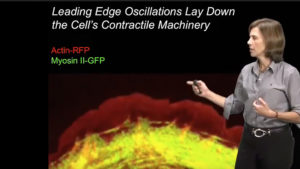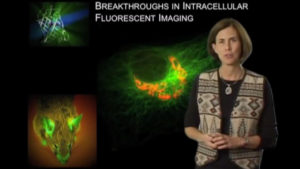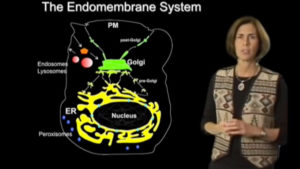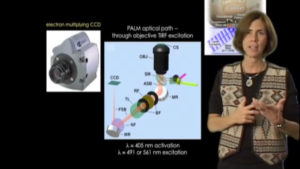Dr. Lippincott-Schwartz is Chief of the Section on Organelle Biology in the Cell Biology and Metabolism branch of the National Institutes of Health. Using a variety of fluorescent imaging techniques in live cells, Dr. Lippincott-Schwartz and her lab study dynamic protein interactions within cells, in real time and space. Her studies span a range of topics including organelle assembly and disassembly, the cytoskeleton and protein transport and the establishment of cell polarity.
After receiving her BA from Swarthmore College, Dr. Lippincott-Schwartz taught for several years (including a few years in Kenya) before returning to the lab to receive a Master’s degree from Stanford and her PhD from Johns Hopkins University. She did her post-doctoral work at the NIH with Richard Klausner. Dr. Lippincott-Schwartz is a member of the National Academy of Sciences and is active on numerous editorial boards.









